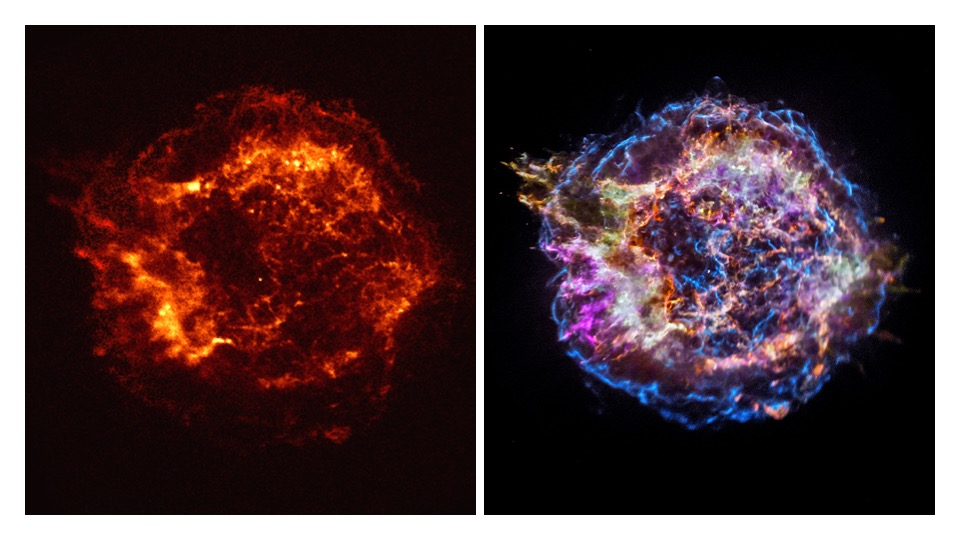
 Credit: NASA/CXC/SAO
Credit: NASA/CXC/SAO
What a Difference 20 Years Makes
September 20, 2019 marks the twenty-year anniversary of the High Energy Astrophysics Picture of the Week. It's no coincidence that 2019 also marks the twenty-year anniversaries of the launch of two major X-ray imaging facilities, the Chandra X-ray Observatory (launched July 1999) and the XMM-Newton X-ray Observatory (launched December 1999). Thanks to these facilities, and other satellite and ground-based observatories, we have made amazing progress in our understanding of the most powerful phenomena in the Universe over these past twenty years. We've identified the origins of gamma-ray bursts, long a mystery, finally detected the mergers of black holes and neutron stars through their gravitational radiation, watched black holes stir up the global environment in clusters of galaxies, uncovered giant bubbles around the Milky Way emanating from the center of our Galaxy, seen superpowerful outbursts, measured the origin of the chemical elements on which life depends, witnessed stars ripped apart and swallowed by black holes. The image above shows, on the left, the first-light image obtained by the Chandra X-ray Observatory of the Cas A supernova remnant. This image was chosen as the very first Picture of the Week, and excited scientists by finally revealing the compact source at the center of the remnant, the tiny core left behind by the star that exploded and produced the extended X-ray emitting ejecta. The image on the left is a Chandra image of Cas A built up from data taken over the past twenty years. This image, now in color, reveals the distribution of heavy elements created and distributed by the supernova explosion itself. Working in concert with Chandra and XMM-Newton, the Swift Telescope, the Fermi Gamma-ray Space Telescope, NuSTAR, INTEGRAL, MAXI, ASTROSAT, AGILE, HXMT, IceCube and NICER are all current high-energy obervatories giving us fabulous discoveries on a daily basis. This team is soon to be joined by ART-XC and eROSITA, telescopes aboard the SRG mission, currently on its way to a parking orbit at the L2 point more than a million miles from earth. Father down the road, high energy astrophysicists eagerly await major new facilities like the Athena X-ray Observatory and the Lynx X-ray Observatory, in development for observations in the 2030's. We look forward to many decades of new discoveries which will further clarify our picture of the most astounding, mind-boggling events and objects in the Universe.
Published: September 16, 2019
<
HEA Dictionary ● Archive
● Search HEAPOW
● Other Languages
● HEAPOW on Facebook
● Download all Images
● Education ● HEAD
>

Each week the HEASARC
brings you new, exciting and beautiful images from X-ray and Gamma ray
astronomy. Check back each week and be sure to check out the HEAPOW archive!
Page Author: Dr. Michael F. Corcoran
Last modified Monday, 26-Feb-2024 17:03:30 EST


